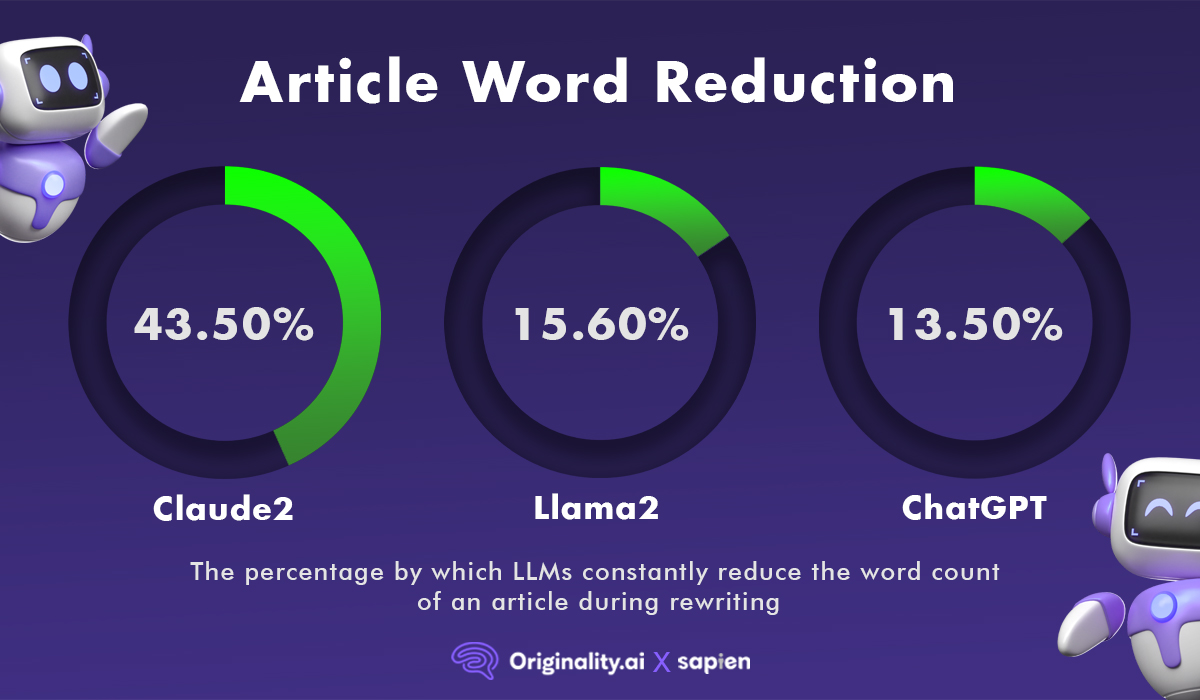With industries across the board becoming increasingly adept at using AI-driven Large Language Models (LLMs) like OpenAI’s ChatGPT, Anthropic’s Claude2 and Meta AI’s Llama2, it begs one obvious question: How do we make sure all of the content out there isn’t generated by AI?
Fortunately, being an “AI sleuth” is relatively easy thanks to some emerging smart SaaS tools. Such solutions will become crucial for those endeavoring to identify the use of AI in content creation, dealing with challenges related to false positives in AI content detection, discerning if AI material has yet been detected, and even if AI “distilled” content has been reconfigured to be more neutral in sentiment.
In fact, to that latter point of original content being watered down or repositioned to a more impartial format that does not accurately reflect the originator’s voice or purpose—whether that be intended or unintended outcome of the spin—one study has revealed how pervasive this is along with the implications related thereto. This as Originality.ai—a 99% accurate AI content, plagiarism and fact checker SaaS assuring publishing with integrity—released its findings that some of the most popular LLMs used to rewrite or paraphrase another text are making content more neutral in sentiment and, in doing so, are notably altering the nature and objective of the initial written work.
 To better understand and consider the possible consequences of such AI-driven content transformation relative to tone, temperament and overall sentiment, I connected with Originality.ai Founder and CEO Jonathan Gillham for some insight into the study along with implications of the disconcerting findings it revealed.
To better understand and consider the possible consequences of such AI-driven content transformation relative to tone, temperament and overall sentiment, I connected with Originality.ai Founder and CEO Jonathan Gillham for some insight into the study along with implications of the disconcerting findings it revealed.
MK: Your study found that popular LLMs like OpenAI’s ChatGPT, Anthropic’s Claude2 and Meta AI’s Llama2 are officially making content more neutral in sentiment. Why does this actually matter?
JG: Employing LLMs to rewrite or paraphrase another text can certainly offer speed and ease in content production, but it comes with caveats. For example, there might be a sound reason for coverage of a news event to have highly negative or positive sentiment. Dampening those qualities might prevent readers from perceiving how potentially troublesome or heartening an event might be. Outside of news content, publishers might desire to convey a particular kind of sentiment to evoke feelings in readers, and a neutral-scoring story might struggle to do so. On the other hand, there could be uses for making texts with more neutral sentiment that read more like “just the facts.” Publishers might want to consider the tone and purpose of a piece and know that LLMs might modify texts in ways that affect those goals.
MK: What exactly is sentiment analysis, which was the benchmark employed for your AI Paraphrased Content study?
JG: Sentiment analysis is the process of analyzing and categorizing texts as positive, neutral or negative, and to what degree. It’s often used to assess opinions and feelings expressed in reviews or open-ended questions in surveys. Many of the stories in this study had sentiment made more neutral after generative AI rewrote them. In the Sentiment Analysis scale, 1 is highly negative, 5 is highly positive and 3 is neutral. LLMs tended to move a story’s sentiment closer to 3, whether the original writing was more negative or positive. In the aggregate, the rewritten articles had their sentiment flattened.

MK: How pervasive do you feel the issue of AI-generated content is becoming?
JG: Some of our other research has looked at large companies that dominate Google search results. These include Valnet, Arena Group, Cande Nast, Red Ventures and DotDashMeredith, among others. Our analysis shows that 46% of major publishers are using AI for content creation. This includes seven out of the 16 companies we’ve studied, with significant AI content detected on their sites. On one particular globally popular sports magazine site, an article was identified by Futurism as being penned by a “fake” author, which our algorithm substantiated. This is a tactic being increasingly used for a content marketing strategy called “parasite SEO,” where reputable domains host content—even wholly AI created—primarily for search engine ranking purposes. Of course, for readers of such content expecting a human was at the helm, this kind of gratuitous and unimpassioned information propagation, especially that with extreme reach, can be disheartening.
According to Axios, “By some estimates, AI-generated content could soon account for 99% or more of all information on the internet, further straining already overwhelmed content moderation systems…Dozens of ‘news sites’ filled with machine generated content of dubious quality have already cropped up, with far more likely to follow—and some media sites are helping blur the lines.”
University of Washington professor Kate Starbird, an expert in the field, told Axios that generative AI will deepen the misinformation problem in numerous ways. “Generative AI has the potential to accelerate the spread of both mis- and disinformation, and exacerbate the ongoing challenge of finding information we can trust online,” she said.
With other reports indicating that a vast majority—over 75%—of consumers are reportedly concerned about AI-driven misinformation, content sentiment degradation is emerging as an insidious facet of that overarching threat. Although it is a more stealth and less considered offense, the restructuring of content in a way that mitigates, or outright eliminates, the intended emotional tonality—the humanity—of a text is exacerbating the Misinformation Age of AI.
Source:https://www.axios.com/2023/07/10/ai-misinformation-response-measures,Posted at MediaVillage through the Thought Leadership self-publishing platform.
Click the social buttons to share this story with colleagues and friends.
The opinions expressed here are the author's views and do not necessarily represent the views of